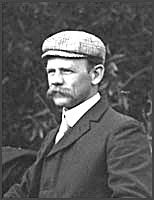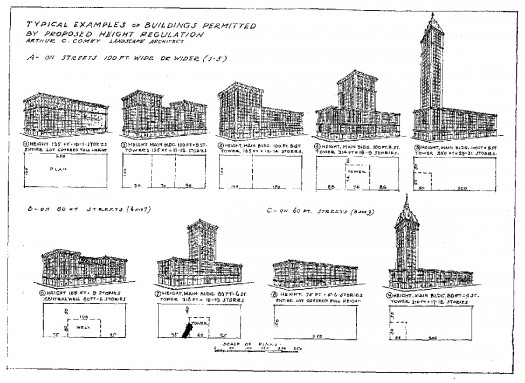A Placemaking Journal
The Future of Municipal Planning: Is John Nolen rolling over in his grave?
 This is not the planning profession John Nolen built. A century later, our great recession has sparked a full re-evaluation of what a city’s urban planning department should be ‘doing’ for its citizens. As witnessed in Los Angeles and San Diego, the planning profession is being measured by its eternal conundrum between Forward Planning Departments that plan for future development projects and Current Planning Services that process today’s development applications.
This is not the planning profession John Nolen built. A century later, our great recession has sparked a full re-evaluation of what a city’s urban planning department should be ‘doing’ for its citizens. As witnessed in Los Angeles and San Diego, the planning profession is being measured by its eternal conundrum between Forward Planning Departments that plan for future development projects and Current Planning Services that process today’s development applications.
And, it appears that a few radical devolutions are taking place.

Devolve!
First, PlaceShakers has referenced both Chuck Marohn and Joe Minicozzi’s renegade work often. Both have seen a meteoric rise in national prominence by refocussing city planning on making rational fiscal decisions based on a long-term return-on-investment. The profession must guide planning back towards the fiscal bottom-line influence it was first responsible for protecting. Having been regulated to stakeholder status in a city’s Economic Development prioritization, planners must reclaim their place at the city’s Capital Improvement Planning table.
“City Planning is an efficient means of avoiding duplication and waste in public improvements.” – John Nolen, 1927
Second, as usual, it was Andrés Duany who praised Peter Calthorpe and changed how I viewed what I thought was a mundane presentation of data from his latest book, Urbanism in the Age of Climate Change. Andrés excitedly pointed out how planners are the rightful generators of research data on city making in the information age. Today, a few non-profit, research-oriented groups, such as Reconnecting America, Center for Neighborhood Technology and Project for Public Spaces, are filling this need. Shouldn’t city planning departments, which are non-profit planning research centers, be responsible for generating valuable research data for their specific locales to educate decision-makers and citizens too?

Source: Peter Calthorpe.
In addition, these same planners must reclaim their ability to articulate a future vision generated by public consensus in real graphic terms. While it may seem to be a given, few city planning departments are able to articulate a specific vision graphically. Too often planners rely upon complex GIS databases or simple color coded zoning and land use maps to communicate their town values and planned adjustments as they move into the 21st century.
“City Planning is an aid to the man in the street to visualize his city properly planned.” – John Nolen, 1927
Third, public planning has been relegated to making policy and regulations solely for private development. Other fully staffed departments, in charge of public Transportation, Economic Development, Environmental Impact Assessments, public Parks and Recreation, and public General Services, have successfully usurped the power of comprehensive city planning. Today, planning’s descent into irrelevancy has been so profound that Tea Party Agenda 21 watchdogs view its historically low profile as proof of the profession’s quiet march towards one-world government!

The man himself.
My assessment of the planning profession reflects a panel I was fortunate to sit on with American Planning Association President, Bill Anderson, last month. We were asked to discuss our approach to repurposing San Diego’s planning department. Our city is typical in dealing with the politically polarizing attempt to figure out how to balance the actual municipal value between the shorter-term, private development-focussed, regulatory-driven, fee generating ‘Planning Services’ versus its longer-term, civic building focussed, policy-driven, subsidized ‘Comprehensive Planning.’ An off-the-shelf, conventional approach probably won’t suffice.
As a New Urbanist, I have long implored municipalities to ‘redesign’ their planning processes through place-based, human-scaled, neighborhood-centric visioning, coding and implementation tools. But, it was urban theorist Teddy Cruz who first implored me to ‘redesign’ the planning organization. Too often, I would recommend simply adding a Design Review Committee. Teddy reframes the role of Non-Government Organizations in planning at the neighborhood scale. NGOs mediate between owners, planners, bankers and designers to implement (build) in less affluent places and his Casa Familiar is an innovative, human-scaled model to be explored.
Bill Anderson also explored our nation’s history of planning organization models. Bill found that they vary from place to place and recommends, “You design the model that fits your context and what you want to achieve as a citizenry, a city, your vision, your priorities, and also your political structure.” He says to localize the planning structure as too often we lazily copy approaches from other cities we wish to emulate.
These perspectives are indicative of the reformation the planning profession is experiencing and provide reasons for hope. To remain relevant, planning organizations must break from their conventional, private-development oriented, urban renewal scaled, master planned development approach and be calibrated locally. Opportunities will be found in cultural shifts towards healthier lifestyles; local economic generation; aging in place; long-term resilience and durability; and social equity. Decision-makers and their constituents need to know they have the opportunity to craft a more locally calibrated structure that reflects the 21st century needs of cities to provide basic health, welfare and safety to humans at the neighborhood-scale.
Simple designing-in-context rules are: first, accentuate positive attributes; second, leave what is working well-enough alone; and third, change what isn’t working. If you have a great GIS department, use it to your advantage to produce useful online data. And if your zoning isn’t generating expected results, don’t reshape your administration procedures. Consider changing your zoning approach.
That’s what Austin, Los Angeles, and Cincinnati are all doing. And it’s a great start towards a renewed Nolen Legacy.
“City Planning is an instrument for uniting the citizens to work for the city’s future.” – John Nolen, 1927
If PlaceShakers is our soapbox, our Facebook page is where we step down, grab a drink and enjoy a little conversation. Looking for a heads-up on the latest community-building news and perspective from around the web? Click through and “Like” us and we’ll keep you in the loop.



